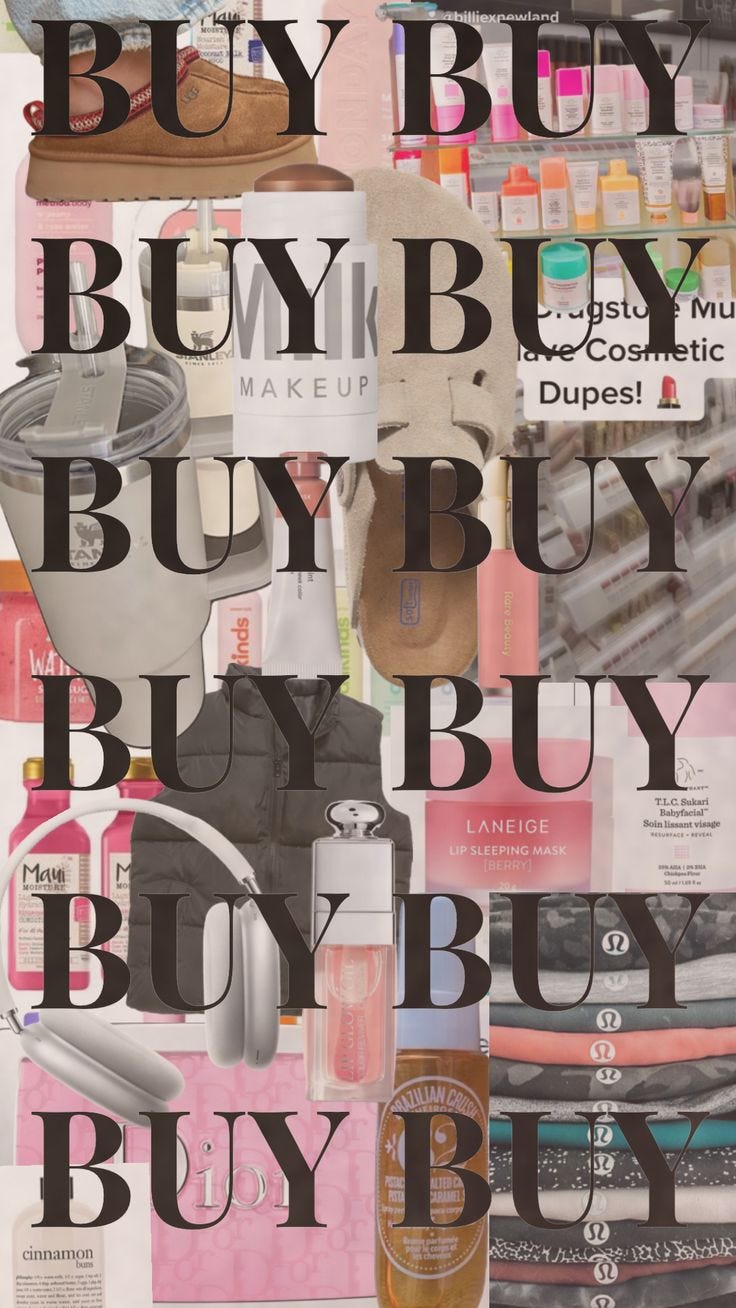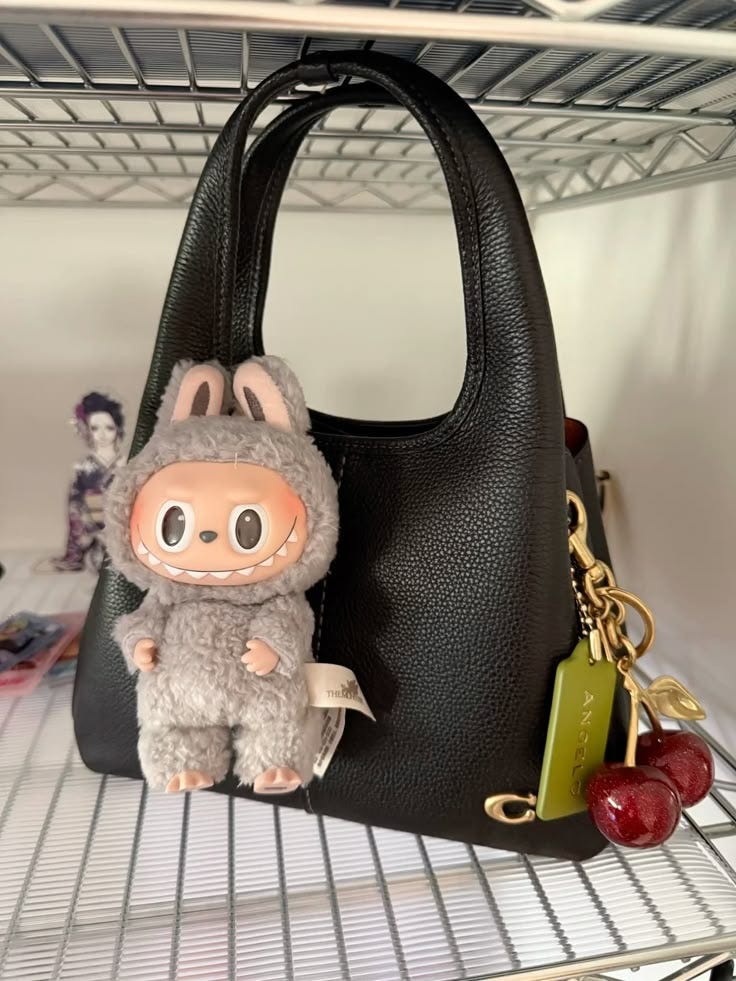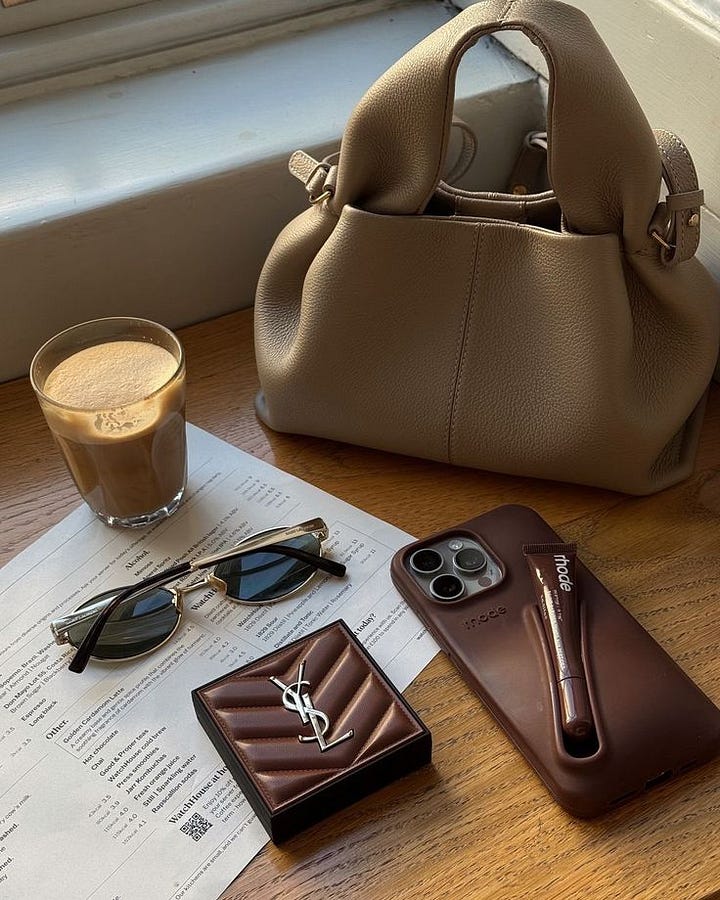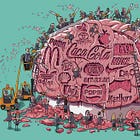Marketing to Gen Z is All About Aesthetics
Brands leverage Gen Z's aesthetic obsession and herd mentality toward trends

We learned the word “aesthetic” and never looked back. Everything has an aesthetic appeal, Instagram photos must be aesthetic, and trends have an aesthetic or a vibe. Brands caught on to our obsession with aesthetics by planning social media strategies to make their products go viral, in turn increasing their sales and visibility. This makes everything fit a vibe or aesthetic – which Gen Z prefers and brands capitalize on.
Early in 2025, a growing trend was seen during airport security, where the mundane task of putting your things into a tray is met with a new digital flex – the airport tray aesthetic. Travelers are clicking pictures of their trays, sharing their core aesthetic. Brands saw an opportunity here and to increase visibility, started advertising their products on the trays, instantly turning travelers into promoters through their social media feeds. “Security tray photos go one step further, blending the thrill of travel with conspicuous consumption, allowing people to construct and broadcast their aspirational identities in a way that feels current and fresh,” J’Nae Phillips, a senior trend analyst and fashion columnist said.

I can’t be the only one wondering how the “scary”, borderline ugly plush dolls, Labubu became luxury collectibles and have been hailed as the “it girl” accessory of 2025. Apart from it being a hyper capitalist trend, it also barely makes sense. For those of us who aren’t chronically online, Labubu is a character from a Nordic-inspired picture book that Hong-Kong artist Kasing Lung created. Due to their hard-to-get nature and unique mischievous smile, they’ve captured the attention of international icons like Rihanna, Lizzo and Hailey Bieber, who style it with their designer bags.

CNBC TV-18 reported, “in the US, one Labubu blind box retails for $27.99 while a reseller offers the same at more than double the price on eBay. Indian retailers sell a Labubu at a starting price of around ₹2,500-₹3,000, while resellers are raking in up to ₹15,000 for the rare versions.” All that money for a toy that looks like something you’d get with a Happy Meal back in the day. Trends like these encourage overconsumption in the blind race to be trendy. It’s no secret that large corporations set a shelf life for the products we run after, so that we keep going back for more.
This also taps into the concept of capitalism-focused aesthetics wherein items are bought and used not for their function, but how they fit a vibe. Yes, Gen Z is big on the vibes. I’ve been corrected numerous times for overusing the word in everyday conversations and with different contexts. Everything has a vibe, everything is an aesthetic. The blurry, half-burnt images from early the 2000s digital cameras are now Y2K core. Cue the parents shaking their heads.
The core aesthetic concept may be traced back to Pinterest boards but eventually found popularity with TikTok trends focusing on a micro aesthetic. Indulge explained it perfectly, “It’s personal style meets moodboarding—turned into identity play.” Think dark academia core and cottage core. Visual representations available below for the older generations.


Crocs being back in fashion or Labubu creating a new aesthetic, it’s safe to say that micro aesthetics don’t have to make sense and brands love capitalizing on them. Say Duolingo’s marketing, for instance. The owl is after you in the most creepy and unhinged way. But it’s catchy and quirky. Brands know how Gen Z works and they work their marketing around them. This isn’t some large corporation capitalistic evil, it’s just good marketing. Cafés are full of mirrors for the ones who thrive on mirror selfies (guilty) and their recognizable decor make them stand out without their names visible. You might click it for the aesthetics but you’re indirectly helping market the place through your social media, for free.
Herd mentality after trends is slowly eroding individuality. Core aesthetics being popularised mean everyone looks, talks, and acts the same way. A niche example, of a short-term trend. was the see-through georgette chikankari kurta paired with jhumkis and ripped jeans. I hope some people remember the 2023 madness of the Laung da Lashkara choreography trend on Instagram that started it all. While keeping my opinions as a Lucknowi aside, the trend made every girl on the internet and in real life look nearly the same.
It’s ironic how Gen Z, that focuses on self-expression, is also run by algorithmic aesthetics which are corroding individuality.
It makes one wonder how much of our personal style and identity is our own. Branded aesthetics make the algorithm push a particular aesthetic and there comes a point where everyone is after the same vibe. Aesthetic choices, therefore, don’t seem intrinsic and are led by following trends which are created by brands. It’s ironic how Gen Z, that focuses on self-expression, is also run by algorithmic aesthetics which are corroding individuality.


Minimalism has been largely traded in for maximalism and “chaos core”. While it was time to move on from the multiple shades of beige, it seems as though the jump was too stark and went from neutrals straight to neons. The shift shows how aesthetics are not personal anymore and it follows whatever the latest trend is. Pinterest anticipated the rise of “Kitschens,” “Eclectic Grandpa,” and “western gothic” aesthetics in the Pinterest Predicts 2024 report. Maximalism ties back to overconsumption and the vicious capitalist cycle continues.
At the end of the day, brands want consumers to continue purchasing by keeping them in the loop with “latest” and “exclusive” trends, under the illusion of choice and expression.







